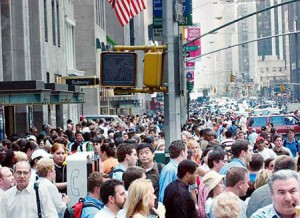Unfortunately, as Hurricane Sandy roared ashore last week, subway tunnels flooded, bus stations flooded; roads became impassable and gas stations either lost power or ran out of fuel. The once stellar public transportation system in New York ground to a halt and commuters suddenly found themselves without a way to get around.
Public buses were back online within hours of the passage of the storm, but many subway trains are still out of commission. This, coupled with the lack of fuel has left commuters stranded; without a way to get around a city where they never before needed a private mode of transportation.
Those who have private transportation in the form of a car or a motorcycle are not in much better shape. Gasoline stations have been running out fuel, and those that have fuel have no electricity to run their dispensing pumps. A fuel delivery of 8 million gallons of fuel arrived last weekend and another 25 million gallons of fuel is expected this coming weekend. This will make life a little easier for drivers in the area, but for people who rely on the subways, the situation is still dire.
Estimates are that several flooded stations may take weeks or even months to be repaired and restored. Tunnels and tracks are yet to be drained of flood waters much less inspected or examined for damage. That leaves many people without a reliable mode of transportation to get from where they are to where they need to be.
Both New York Governor Andrew Cuomo and New York City Mayor Michael Bloomberg are encouraging all drivers to consider car pooling until the public transportation system can be brought back online. This means car sharing is the new catch-phrase across the east coast, from the Jersey Shore to Connecticut and just about every where in-between. It’s not just about saving gas now, it’s about helping people stay employed, get to the grocery store and keep their kids in school; it’s about surviving.

 Live Chat
Live Chat






